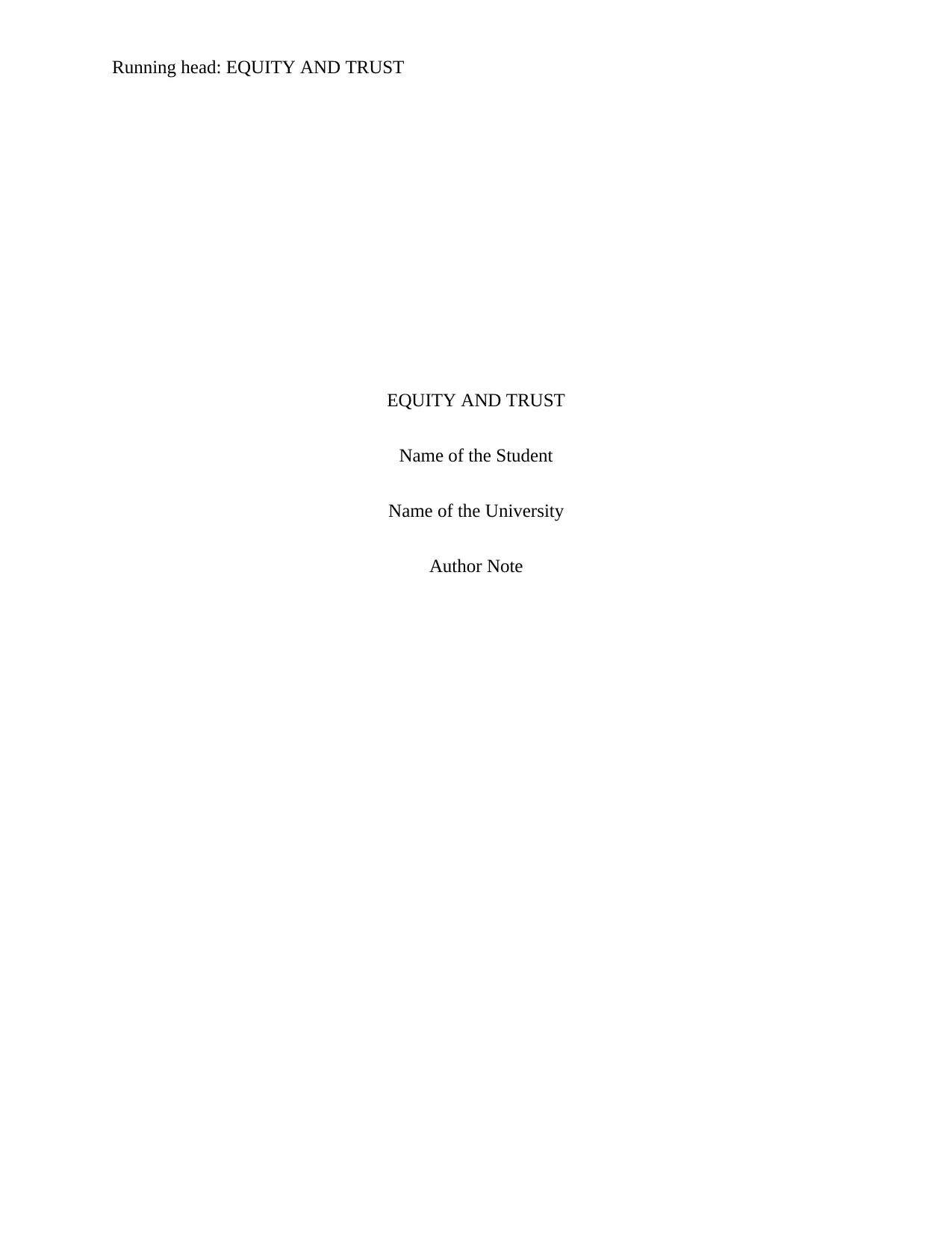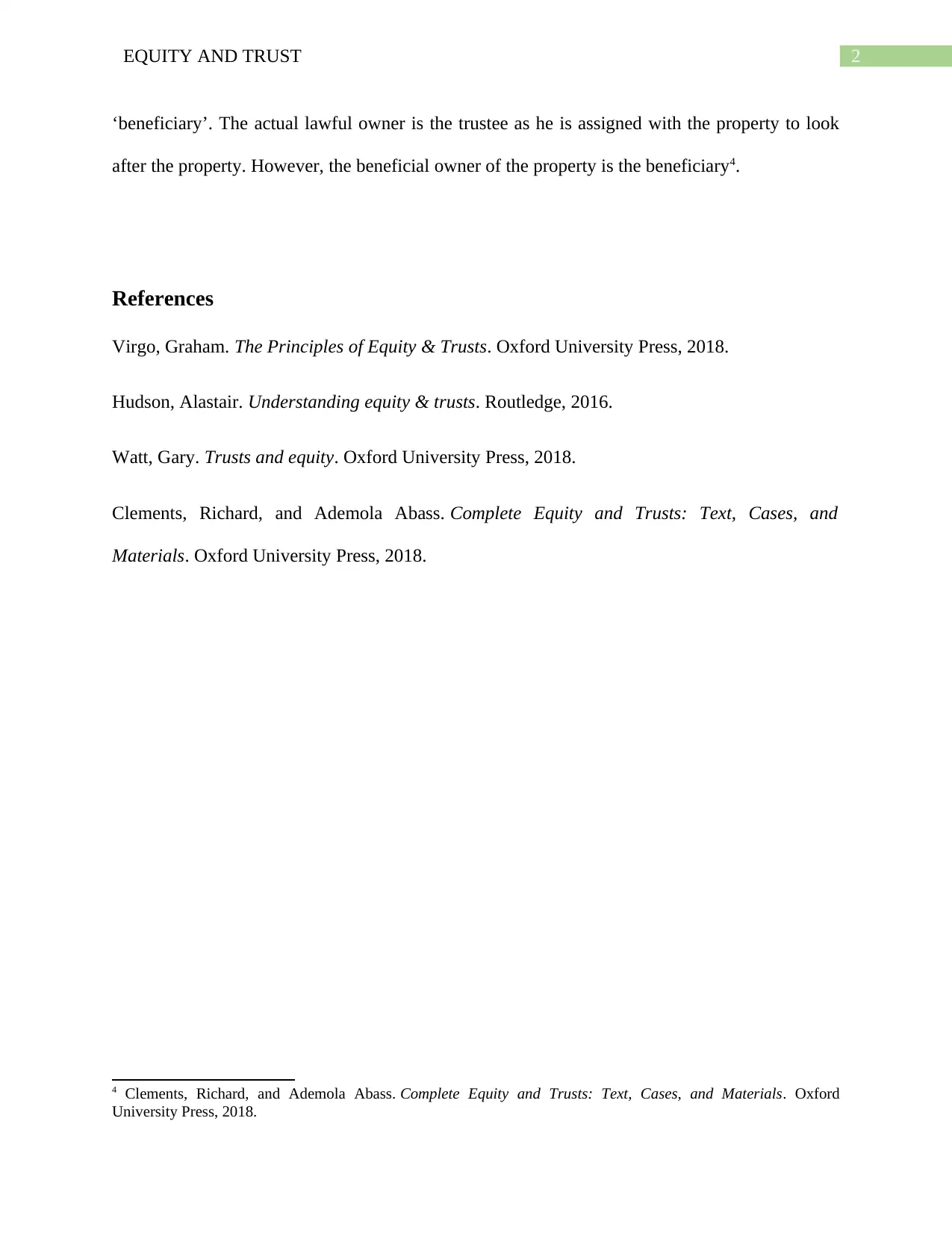Equity and Trusts: Analysis of UK Case Law and Legal Journals
VerifiedAdded on 2022/12/19
|3
|460
|21
Report
AI Summary
This report provides a comprehensive overview of Equity and Trusts, focusing on the key principles and applications within the UK legal system. It examines the historical context, including the role of the Chancery Courts and the distinction from Common Law. The report delves into the concept of Equity, emphasizing fairness and impartiality, and explores the development of Trusts as an adjunct to property law. It differentiates between the roles of trustees and beneficiaries, highlighting the legal framework governing property rights and obligations. The analysis incorporates UK case law and legal journals to provide a detailed and insightful perspective on the subject, adhering to the specific requirements of the assignment brief by excluding Australian case law and providing appropriate references.
1 out of 3










![[object Object]](/_next/static/media/star-bottom.7253800d.svg)